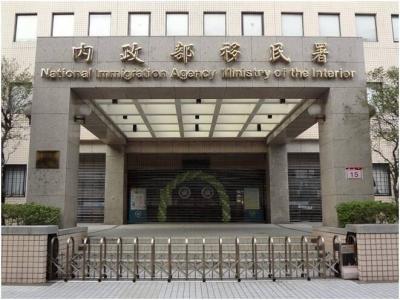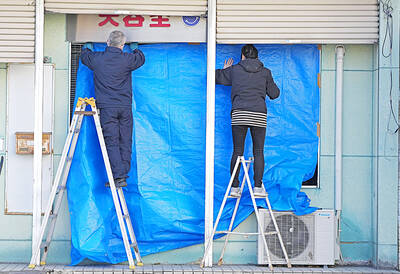Premier Sean Chen (陳冲) has approved a proposal to relax restrictions on the recruitment of foreign workers to bring in more immigrant laborers, a move rarely seen and one which a labor group has said would not only upset the could also lead to further exploitation of immigrants.
At a Cabinet-level meeting earlier this week, the Ministry of Economic Affairs and the Council of Labor Affairs (CLA) jointly proposed that enterprises be granted extra quotas for foreign workers by making higher payments to a government fund under the CLA.
Taiwan uses a five-tier system to regulate the permitted ratio of foreign workers in an enterprise’s total workforce in different sectors, ranging from 10 to 35 percent, with the highest, 35 percent, applied to four industries — electroplating, forging, dyeing-and-finishing, and casting in the manufacturing sector.
Under the proposal, an enterprise would see its maximum amount of foreign workers raised by 5 percent if it agrees to double the fee it is required to pay into the Employment Stabilization Fund (ESF) — currently NT$2,000 a month for each foreign worker it employs — by 10 percent if it pays three times as much, and so on, Executive Yuan spokesperson Hu Yu-wei (胡幼偉) said.
The proposed plan was cleared during a meeting presided over by Chen as part of policy discussions aimed at finding solutions to address the labor shortage problem, Hu said, adding that details have not yet been worked out.
Lin San-quei (林三貴), director-general of the council’s Bureau of Employment and Vocational Training, said yesterday that exceptions to the statutory maximum ratio “will not be made without an upper limit,” but he was unable to estimate how many more immigrant workers the policy will bring in.
Administered by the CLA, the emplpoyment fund system was set up to obligate employers who hire foreign workers to reduce wage costs to contribute funds to the government that deal with vocational training with unemployed local laborers.
The ESF system has been fraught with problems. There have been several cases of employers illegally deducting the levy from the salaries of their foreign workers.
Sun Yu-lien (孫友聯), secretary-general of the Taiwan Labor Front, said the Employment Stabilization Fund was like “a discretionary treasure of the CLA.”
“The ESF is the main source of the funding of the Bureau of Employment and Vocational Training. Why didn’t the government allocate a bigger budget to the CLA? If an employer can pay the fee into the fund for a migrant worker it employs, why can’t it give the workers more decent pay?” Sun said.
In spite of the nation’s minimum wage also applying to foreign workers, the difference between the salary of a local worker and that of an immigrant doing the same job is substantial, Sun added.
Sun expected the relaxation of the quota would push up the number of foreign workers employed in Taiwan to over 500,000, from the current record high of 440,000, because experience has proved that “imposing the employment stability fee did not decrease the incentive to employers to hire foreign workers.”

A small number of Taiwanese this year lost their citizenship rights after traveling in China and obtaining a one-time Chinese passport to cross the border into Russia, a source said today. The people signed up through Chinese travel agencies for tours of neighboring Russia with companies claiming they could obtain Russian visas and fast-track border clearance, the source said on condition of anonymity. The travelers were actually issued one-time-use Chinese passports, they said. Taiwanese are prohibited from holding a Chinese passport or household registration. If found to have a Chinese ID, they may lose their resident status under Article 9-1

Taiwanese were praised for their composure after a video filmed by Taiwanese tourists capturing the moment a magnitude 7.5 earthquake struck Japan’s Aomori Prefecture went viral on social media. The video shows a hotel room shaking violently amid Monday’s quake, with objects falling to the ground. Two Taiwanese began filming with their mobile phones, while two others held the sides of a TV to prevent it from falling. When the shaking stopped, the pair calmly took down the TV and laid it flat on a tatami mat, the video shows. The video also captured the group talking about the safety of their companions bathing

PROBLEMATIC APP: Citing more than 1,000 fraud cases, the government is taking the app down for a year, but opposition voices are calling it censorship Chinese Nationalist Party (KMT) Chairwoman Cheng Li-wun (鄭麗文) yesterday decried a government plan to suspend access to Chinese social media platform Xiaohongshu (小紅書) for one year as censorship, while the Presidential Office backed the plan. The Ministry of the Interior on Thursday cited security risks and accusations that the Instagram-like app, known as Rednote in English, had figured in more than 1,700 fraud cases since last year. The company, which has about 3 million users in Taiwan, has not yet responded to requests for comment. “Many people online are already asking ‘How to climb over the firewall to access Xiaohongshu,’” Cheng posted on

A classified Pentagon-produced, multiyear assessment — the Overmatch brief — highlighted unreported Chinese capabilities to destroy US military assets and identified US supply chain choke points, painting a disturbing picture of waning US military might, a New York Times editorial published on Monday said. US Secretary of Defense Pete Hegseth’s comments in November last year that “we lose every time” in Pentagon-conducted war games pitting the US against China further highlighted the uncertainty about the US’ capability to intervene in the event of a Chinese invasion of Taiwan. “It shows the Pentagon’s overreliance on expensive, vulnerable weapons as adversaries field cheap, technologically